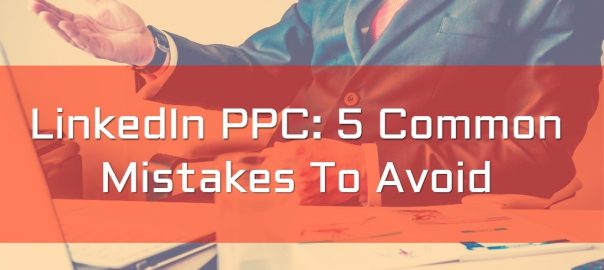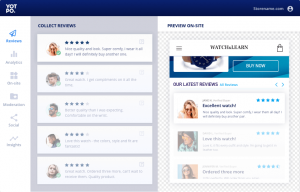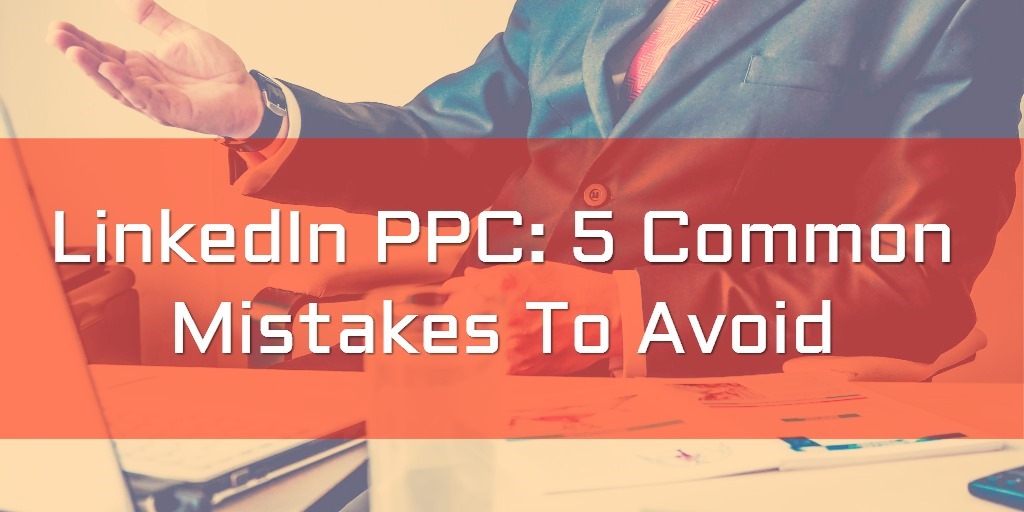
With over 467 million users across 200+ countries and 24 languages, LinkedIn is a fantastic opportunity for advertisers who define their core audiences by characteristics like job title, industry, company, seniority, etc. LinkedIn has offered a self-serve advertising platform for several years, but I’ve noticed that adoption has been slow. With more and more of my clients using LinkedIn I thought I would point out 5 common mistakes I see that cost money & reduce results.
1. Only Targeting An Audience One Way
This is the most common mistake I see. A company will want to reach decision makers in the marketing department, so they load up a bunch of job titles like CMO, VP of Marketing, Marketing Director, etc. and push the campaign out the door. That approach works and will reach the people you want, but you’ll miss a lot of potential.
Remember that many companies today give out “interesting” job titles like Director of Awesomeness and the like. That guy might be the marketing director, but your campaign won’t reach him. However, what if you targeted your campaign to people with a Marketing job function and seniority of CXO, VP or Director? That would reach the same people as our initial job titles campaign as well as picking up additional people. Here is the proof.
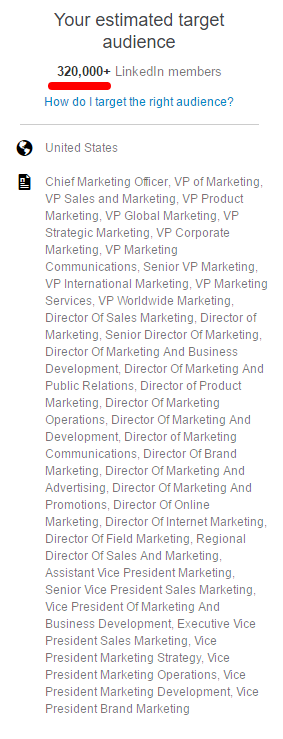
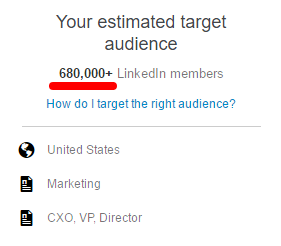
Look at that long list of job titles. 320K people in the audience and a pain to set up. The second audience is conceptually the same people, but now we reach 680K people with less setup. With all the variations in a person’s profile, you need to target people in multiple ways or you’re missing out.
2. Launching Campaigns At The Wrong Time
The algorithm LinkedIn uses for ads is very finicky and makes decisions very quickly. Therefore, the timing of your campaign launches can have an outsized impact on results. Text Ad campaigns average about 0.025% CTR and Sponsored Content campaigns average about 0.30% CTR. If your ads don’t meet or exceed the average in the first 1,000-2,000 clicks they get pretty much ignored.
Consider the audience of LinkedIn users. They are in a business mindset; connecting with people they met at a conference, researching a job applicant, having discussions with their network, etc. It’s one of the most powerful characteristics of the audience. However, it means that traffic on weekdays is much different than weekends and traffic on weekdays varies significantly from morning to midday to evening. So if your new campaign goes out the door on Friday afternoon (whew, you squeezed it in this week) it may not get a good CTR and will basically die on the vine.
I recommend launching new campaigns early in the morning on Tuesday if possible. That’s been where I’ve had the best luck.
Bonus Tip: If your ads got some impressions and are just languishing, try again at a different time. It’s easy to just duplicate the current ad, pause it & let the clone get its start at a better time. Sounds crazy, but it works time and time again.
3. Writing Off Text Ads
Looking at the CTR stats from above many advertisers wonder why they should even bother with text ads. Plus, the placement of these 3-packs tends to be awful. Here is a screenshot from a LinkedIn group I run:
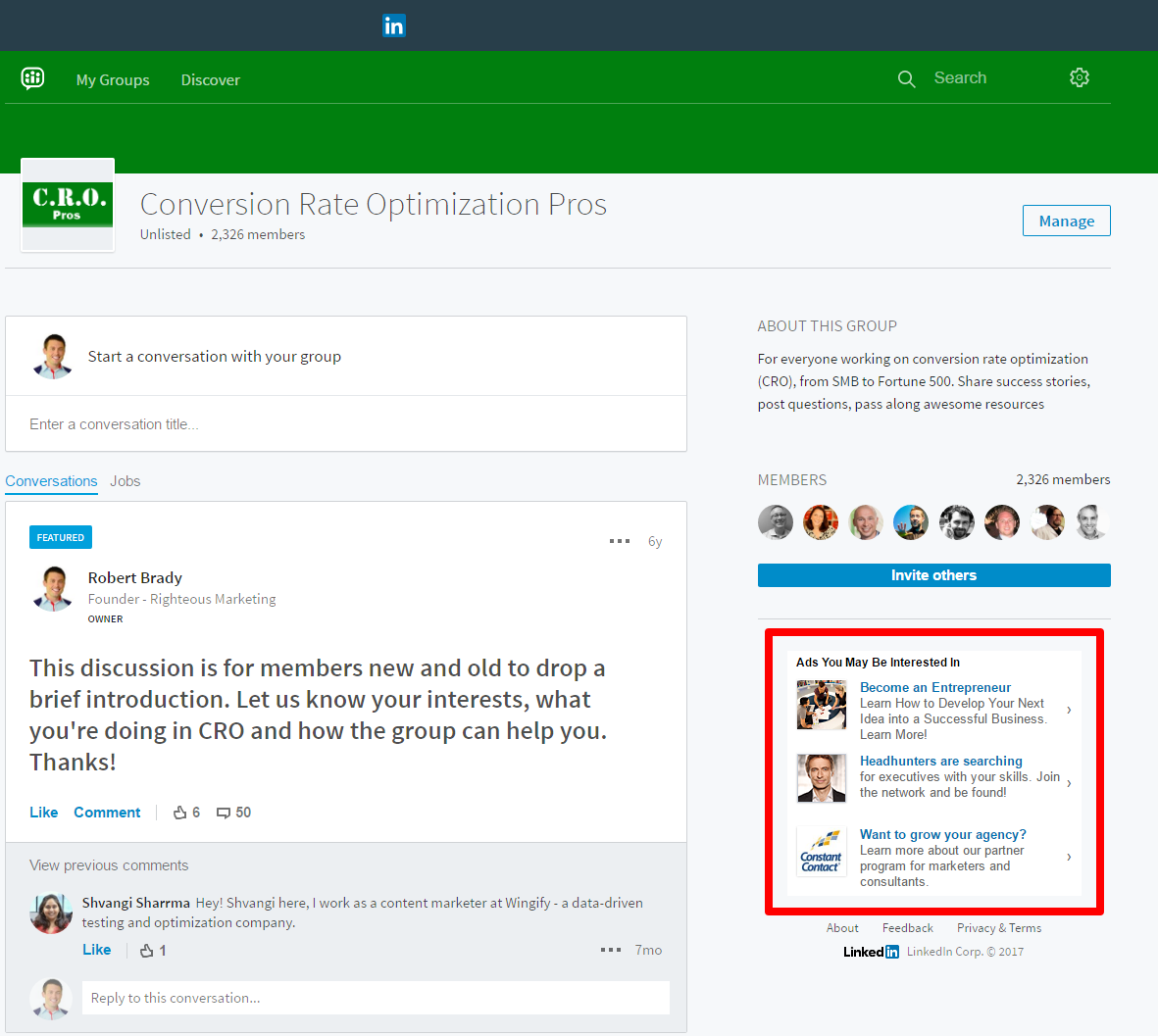
The ad unit is in the right column, clear at the bottom. Add in the fact that the image is only 50×50 and you only get a 25 character headline with 80 character description? Even AdWords gives you more characters these days. Sounds pretty dismal huh?
Because fewer advertisers utilize this format, the competition is lower and you can often get lower CPCs. Also, if someone is looking at the ad unit (given its out-of-the-way placement) they are very determined. This can make those clicks more qualified.
I recommend advertisers test this placement and go with a very aggressive CTA. You don’t need a very high CTR to keep them running (0.025% remember) and these people were really dedicated to read your ad and click.
4. Not Tagging URLs
Back in August of 2016, LinkedIn finally launched their own native conversion tracking pixel. I wrote a full post on how to set it up. However, I’m still not 100% confident in the reliability of the tracking.
For example, one of my clients spent a few thousand dollars in January on LinkedIn and the interface showed 3 conversions. The VP of Marketing was none too happy seeing those results. But when we went through Hubspot and checked for records tagged with our LinkedIn campaign names we found 10 conversions. That made the discussion a lot more pleasant, but LinkedIn is selling itself short by a factor of 3X.
Therefore, I recommend all LinkedIn advertisers manually tag all their URLs with the standard UTM variables (or whatever tracking solution you use) so they have tracking redundancy. Then you’ll judge LinkedIn fairly and know more accurately what’s working and what’s not.
5. Ignoring Exclusions (Negative Audiences)
When setting up audience targeting, most people think of who they want to reach. This is great, but you also might want to think of who you DON’T want to reach. When setting up your targeting in LinkedIn, if you look close you’ll see that you can choose to include or to exclude based on your targeting criteria. Consider this example where we’re targeting CXO, VP and Director level employees while excluding Training and Entry level employees.

Most advertisers making this mistake believe that by targeting only high-level seniorities, they are naturally NOT targeting Training or Entry level. However, I’ve found that LinkedIn sometimes has to guess which bucket someone fits into. There are lots of reasons why someone could be incorrectly categorized, but if you have high standards for your conversions I recommend using exclusions.
Conclusion
LinkedIn features some of the best B2B targeting online and every advertiser should test if it can work for them. As you do so, avoid these 5 mistakes to get even better results.
* Adapted lead image: Public Domain, pixabay.com via getstencil.com
LinkedIn PPC: 5 Common Mistakes To Avoid
The post LinkedIn PPC: 5 Common Mistakes To Avoid appeared first on Search Engine People Blog.
Search Engine People Blog(57)
Report Post